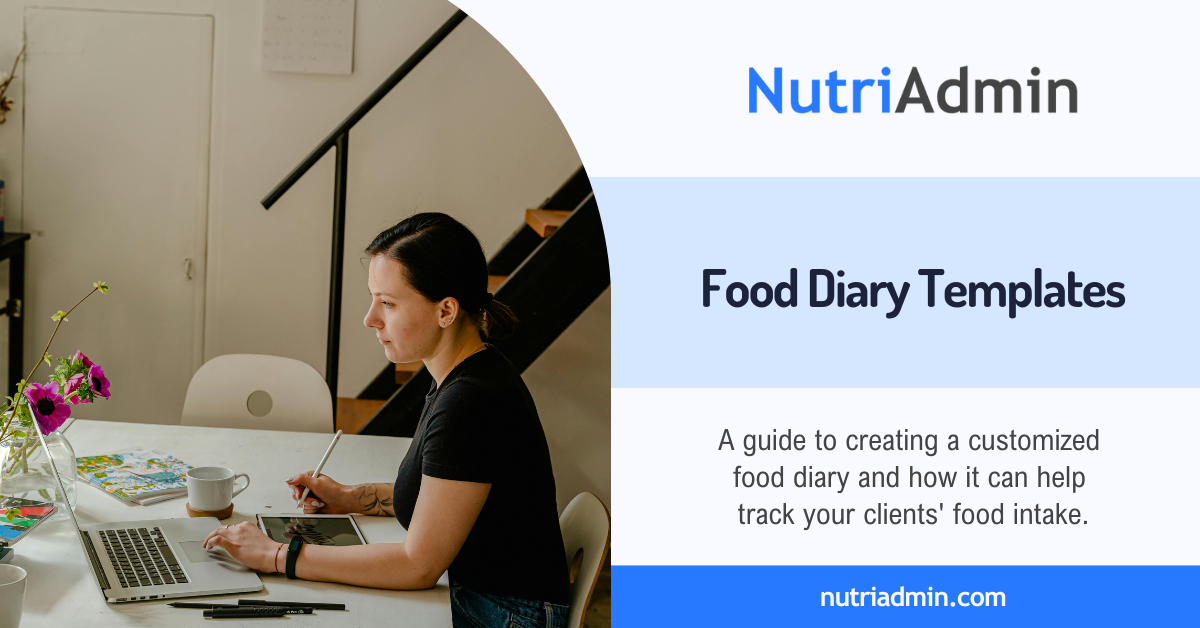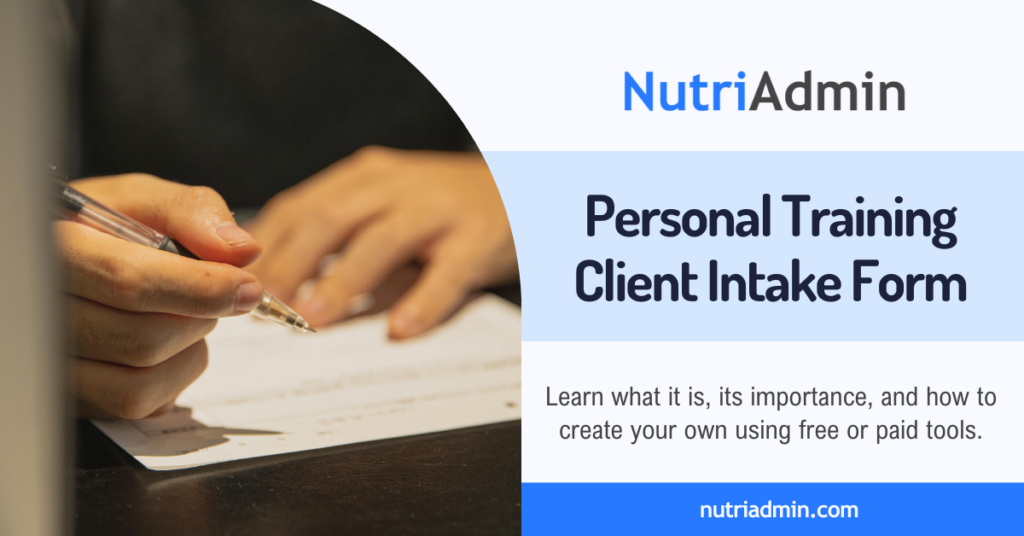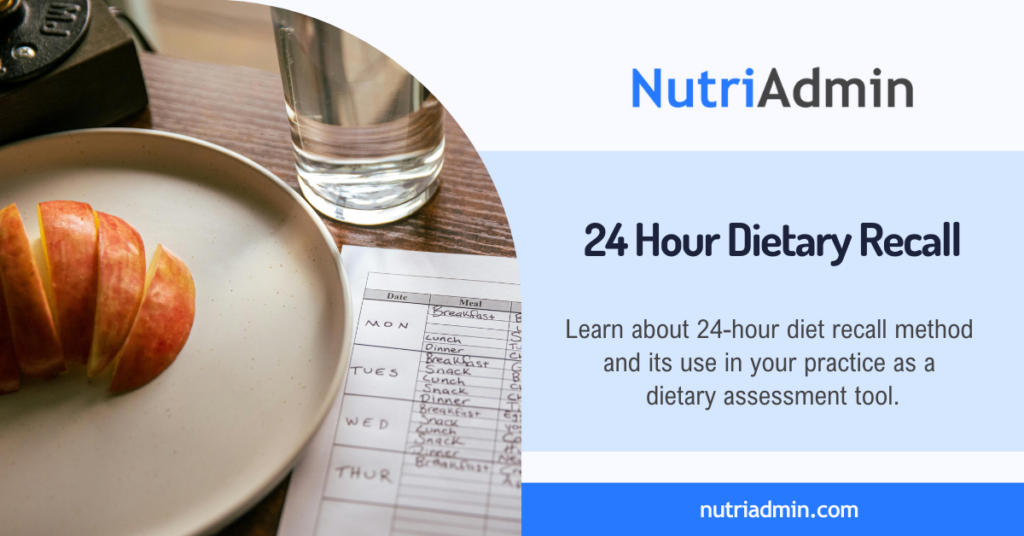As a nutritionist, dietitian, personal trainer, or coach, you know the importance of tracking your clients’ dietary habits. This article will discuss one way to assess and track your clients’ food intake. Learn what a food diary is and how it can help you and your clients. We will also give practical tips on maximizing the accuracy of food diary data you get from clients as well as share different ways to make your own food diary template. If you stay until the end, you can download printable food logs or journal templates.
Are you tired of sifting through piles of client food logs, each with its own format and disorganized entries? Do you ever wonder how your colleagues can seamlessly organize and effortlessly manage their clients’ food diaries?
As you struggle to decode messy handwriting and decipher incomplete data, you can’t help but wonder: is there a better way to do this?
Learn how to make dietary tracking more efficient and organized for clients using food diary templates, ensuring accurate food intake tracking through this guide.
What is a Food Diary?
A food diary, also called a food log or journal, is a detailed record of everything a person eats and drinks throughout the day.
It helps track calorie intake, macronutrients (protein, carbs, fat), portion sizes, and eating patterns. Food diaries promote awareness about dietary choices and can give an idea of areas for improvement.
How can it help you and your clients?
As a nutritionist, dietitian, personal trainer, or coach, you can use a food diary to help your clients assess their dietary intake before making any intervention and monitor their food intake. It’s an effective way to help them achieve their health and fitness goals.
By using a food diary, your clients can better understand their relationship with food. It helps them identify patterns in their eating habits and make positive changes to their diet.
Studies have shown that people who keep food records are twice as likely to achieve their weight loss goals compared to those who don’t track their diet.
If your client is trying to lose weight, a food diary can help them track what they eat, especially if they have a calorie deficit goal. This will keep them accountable and increase their motivation to lose weight.
If you offer a meal-planning service, you can use your client’s food diary to create a meal plan that caters to their unique needs. This information can also help you determine whether the current meal plan is effective or needs improvement.
Practical Tips on Maximizing the Accuracy of Your Food Journal
Keeping an accurate food journal requires diligence and attention to detail, but following these tips can help ensure your client’s records are as precise as possible.
- Provide clear instructions on how clients should fill in their food diary. This can be during your initial consultation or through an instruction section in your food diary template.
- Educate your clients on how to estimate food portions or provide them with visual aids like pictures if measuring tools are not available.
- Instruct them to measure or weigh food portions whenever possible, using measuring cups, spoons, or a food scale.
- Emphasize recording food intake immediately after eating rather than trying to remember later. Memories can be unreliable, and details may be forgotten.
- Remind them to be specific when describing the food items. Include the type of food, preparation method (e.g., baked, fried, grilled), brand names, and any added ingredients or condiments.
- Make sure they also keep track of all beverages, including water, juices, sodas, and alcoholic drinks, along with their portion sizes.
- Ask them to note snacks or small bites consumed throughout the day in their food journal template. These can easily be overlooked but contribute to overall intake.
- When eating out, try to find nutrition information for the restaurant dishes or estimate portions as accurately as possible.
How To Make Your Own Food Diary Template
Creating a food diary is easy. The simplest thing you can do is use a notebook and pen. However, with the rise of virtual consultations, there are more creative and practical ways to create your own food diary template. You can make a printable diet log or one that can be accessed and filled out online.
Many food journal templates are available online that you can customize according to your preference and branding. One option is a basic food log template table with dates and meal times labels. In contrast, you can create more comprehensive ones with instructions and visual aids.
Free Printable Food Diary Template
If you provide in-person services and want to create a personalized and creative food journal template you can give to your clients, you can easily do so by using graphic design tools like Canva.
Include dedicated sections for breakfast, lunch, dinner, and snacks. Add parts for dates and time eaten. You can also add other columns for hunger levels, food descriptions, amounts, calories, protein, and notes.
You can choose from a variety of printable food diary templates that are readily available on Canva, or you can customize the free templates to reflect your brand. Alternatively, you can create your own food log template from scratch to make it unique. Be sure to add your logo and branding for a cohesive, polished look.
You can download and use the printable diet log template below. On a computer, right click and choose Save image as to download it. On a mobile device, tap the image and hold to get options, then choose the appropriate one to save the file to your smartphone
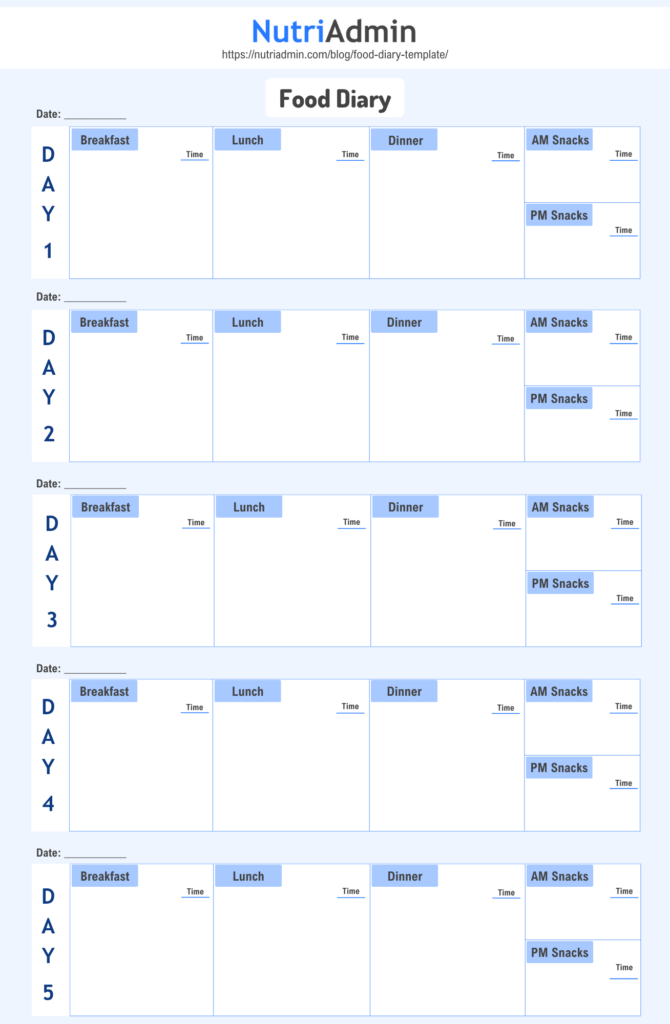
You can also use the food portion size guide below, together with the printable diet log template. This way, your clients can use it to estimate portion sizes if they don’t have measuring tools available.
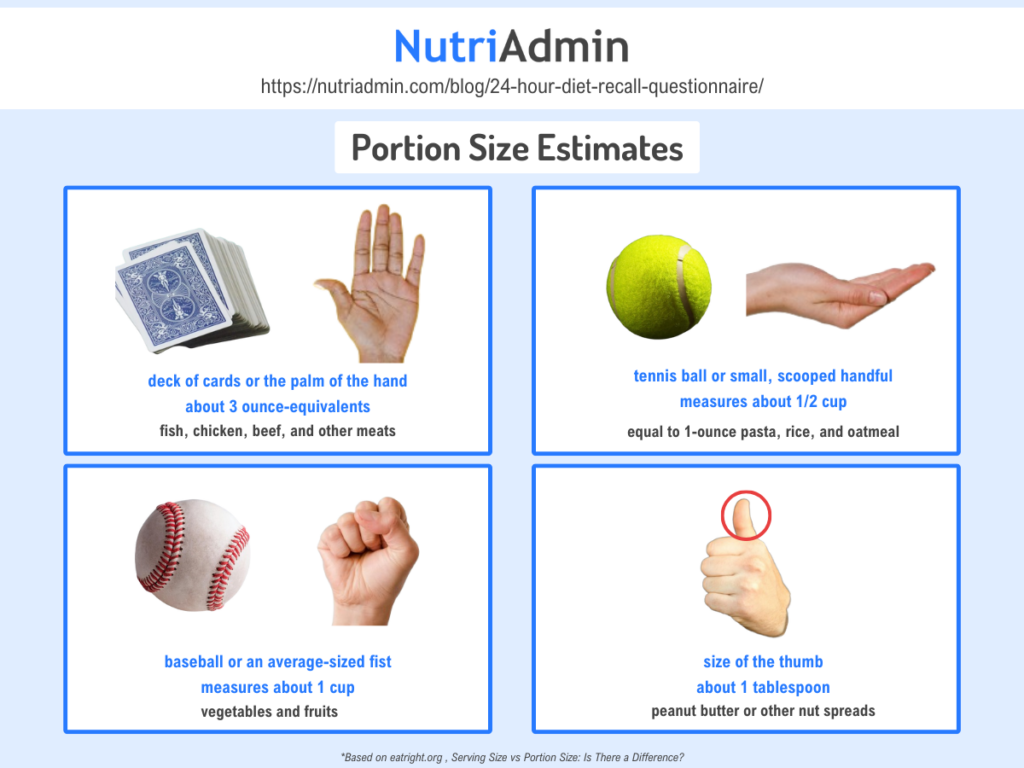
Creating Spreadsheet-Based Food Diary Templates Using Excel
If you want an online and customizable food log template, you can use spreadsheet apps such as Excel and Google Sheets. This way, you can copy and paste data or make calculations within the spreadsheet.
This type of food diary template can be sent as a file to your clients via email or other messaging apps. If you’re using Google Sheets, you can give your clients a link to their assigned spreadsheet, where they can edit it online. This will allow you to monitor their food intake whenever you need to.
You can download a sample Excel food diary template below that you can customize to your own branding:
Nutrition Tracking Apps
Instead of a traditional food diary, you can now use apps and websites like MyFitnessPal and Cronometer. These platforms have extensive databases of foods and packaged items with pre-loaded nutrition facts where your clients can log their food intake and have an automatic nutrition analysis.
You and your clients can connect through the app, allowing you to monitor their daily food logs remotely. Many apps also integrate food logging with activity tracking and progress charts.
Most apps are available on phones, tablets, and computers. Additionally, they often include handy features like barcode scanners, recipe builders, restaurant logging, and the ability to track water, hunger levels, and more.
Food Diary Template Using Professional Nutrition Software
Using specialized nutrition or practice management software solutions can offer nutrition and wellness professionals numerous advantages. Moreover, these solutions can help track clients’ food intake and progress. This makes it easier for professionals to analyze and create personalized diet or exercise plans.
With the help of nutrition software or meal planning apps like NutriAdmin, users can use a default food diary template or an option to make their own printable or online diet log template. They can also do a nutritional analysis using the software to assess the clients’ food intake easily.
NutriAdmin and its alternatives can also help keep client records, provide online nutrition questionnaires, and create customized meal plans. It can streamline workflow by reducing paperwork and administrative tasks. This enables users to provide better service and care to their clients.
You can read our best meal planning app article to learn how to find your ideal software solution.
To try the food diary template using the online nutrition questionnaires feature in NutriAdmin, click on the button below. Please note that by submitting your email address, you are consenting to receive marketing emails from us. However, you are free to unsubscribe at any time. Please be aware that the data you provide is solely for demonstration purposes and will be deleted afterward.
Alternatively, you can download the printable food diary template generated below from NutriAdmin:
